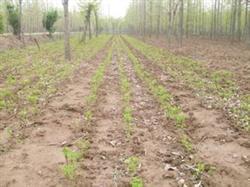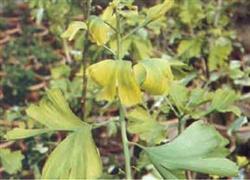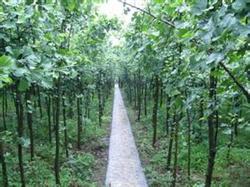Drainage and irrigation management of Ginkgo biloba

Ginkgo trees have strict requirements for water, and they are wet, but they are afraid of ponding. The seedlings will die after soaking in water for 3-4 days. In the production process, attention must be paid to drainage and timely watering. First, the principle of irrigation Ginkgo biloba growth and development stages need to have sufficient water. Irrigation depends on conditions such as tree body, precipitation and soil moisture content. Specifically, we should do a good job of irrigation in the following periods: before germination, at the end of dormancy, before bud germination, that is, usually called "spring irrigation"; after flowering, fruit expansion, rapid growth of new shoots, higher requirements for water, more can be continuously irrigated twice; fruit development, at this time in the rainy season, generally do not need irrigation, but in dry years still need irrigation. Before overwintering, after fruit harvest, leaves turn yellow and fall off, irrigation before soil freezing, promote flower bud differentiation, enhance tree cold overwintering ability. Second, drainage Ginkgo fear of waterlogging, root system in the water 15 cm deep, for 10 consecutive days, will cause deciduous and rotten roots, heavy plant death. When selecting a garden, attention should be paid to the section where the groundwater level is 1-2 meters. When planning the garden, the drainage system should be designed, that is, deep trenches should be opened around the garden, and a drainage ditch should be opened every two rows in the garden. Open trenches and underground trenches can be used. Hillside drainage can be drained along the ditch in combination with horizontal steps, fish scale pits and terraces. When the water content of the root distribution layer reaches the maximum water holding capacity of the soil, drainage is required.
- Prev

Key points of fertilization Management of Ginkgo biloba
The physiological chlorosis of Ginkgo biloba is caused by the lack of certain trace elements in the soil. The disease generally began to occur in mid-late June, and the disease expanded rapidly from mid-July to late August, and the leaves lost green and gradually changed to grayish brown, showing a withered shape. All the ginkgo trees harmed by this disease not only affect the yield of the year.
- Next

Three-dimensional cultivation of Ginkgo biloba auricula
It is necessary to master the essentials of planting ginkgo biloba, that is, "strong, big, sufficient, dry, solid, shallow, transparent and high". In order to facilitate memory, the song formula is: "Miaozhuang acupoint big base fat; dry soil to fill holes layer by layer; seedlings to shallow water to penetrate; high soil to prevent lodging. Air circulation, high ground temperature, eight characters should be easy to master, according to this."
Related
- Fuxing push coffee new agricultural production and marketing class: lack of small-scale processing plants
- Jujube rice field leisure farm deep ploughing Yilan for five years to create a space for organic food and play
- Nongyu Farm-A trial of organic papaya for brave women with advanced technology
- Four points for attention in the prevention and control of diseases and insect pests of edible fungi
- How to add nutrient solution to Edible Fungi
- Is there any good way to control edible fungus mites?
- Open Inoculation Technology of Edible Fungi
- Is there any clever way to use fertilizer for edible fungus in winter?
- What agents are used to kill the pathogens of edible fungi in the mushroom shed?
- Rapid drying of Edible Fungi

